Galaxy S21 Ultra vs iPhone 12 Pro Max, Pixel 5, Note 20 Ultra: Portrait camera comparison
We may earn a commission if you make a purchase from the links on this page.
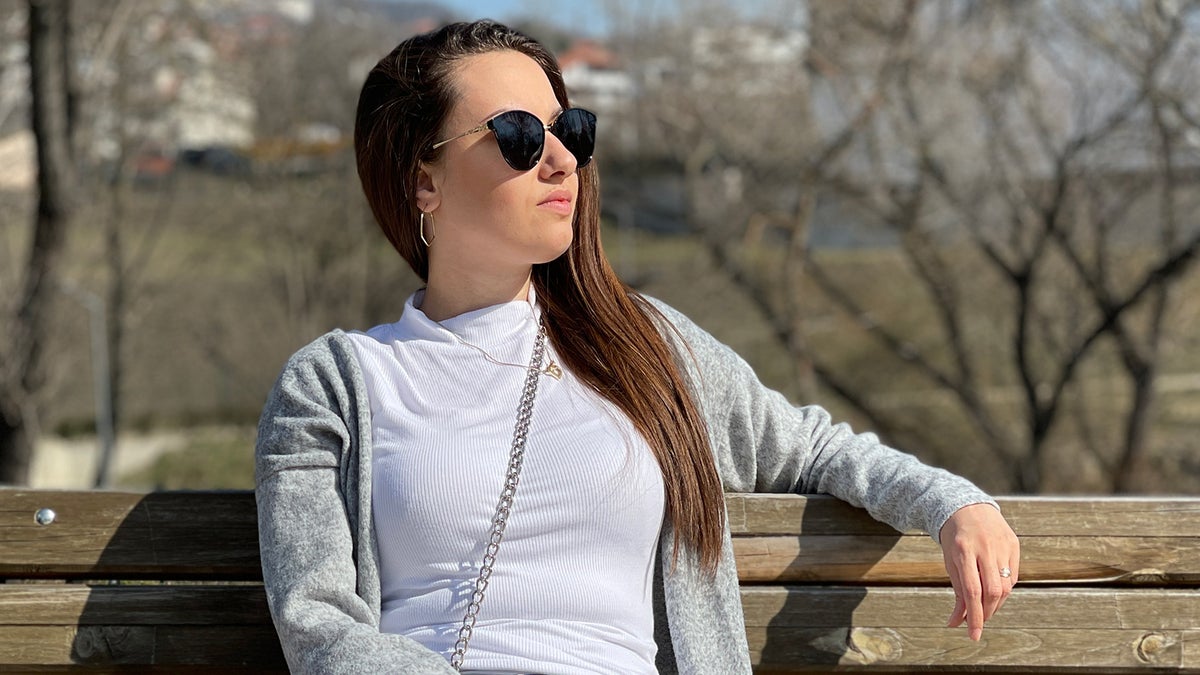
We've pitted the Galaxy S21 Ultra against the iPhone 12 Pro Max, Pixel 5, and Note 20 Ultra in a variety of camera tests, namely our regular camera comparison, our selfie shootout, and finally, a blind camera comparison where you voted for your favorite device.
Today, we are comparing how all of these tackle portraits, an important camera feature that's now a mainstay on flagships and mid-range phones alike. However, some do better than others thanks to depth sensors and software algorithms that cleverly blur the background of your shots.
- iPhone 13 price, release date, features, and specs
- If you’re looking to get an iPhone 12 pro max at a lower price, make sure to check our best iPhone 12 pro max Black Friday deals and other major shopping events pages.
What constitutes a good portrait? Interestingly, that's not the amount of faux bokeh in the back, it's the focal length. The longer the lens, the more flattering a person's face looks, and most phones understand that by employing their telephoto camera for portraiture. All among our contestants do that as well, but the iPhone seems the best prepared as it offers the longest reach at 2.5X. Remember that, as it would be a common leitmotif throughout this whole comparison: all things considered, it's pretty hard to one-up the iPhone in the portrait game.
Read more:
- Galaxy S21 Ultra vs iPhone 12 Pro Max, Google Pixel 5, Galaxy Note 20 Ultra camera comparison
- Galaxy S21 Ultra vs iPhone 12 Pro Max, Google Pixel 5, Galaxy Note 20 Ultra selfie camera comparison
- Galaxy S21 Ultra vs iPhone 12 Pro Max, Google Pixel 5, Galaxy Note 20 Ultra blind camera comparison
Scene 1
At first glance, the differences between these portraits are obvious: the iPhone stands out with its warmer color temperature, while the Pixel gives off a moodier and more contrast-y look. The both Galaxies maintain a neutral color temperature stance, which isn't as pleasingly warm as the iPhone but still manages to capture our lovely subjects in the best possible light.
Zooming in at 100%, however, reveals that the Google Pixel 5 is too noisy, while both Samsung phones have produced overly-smooth portraits that give off a plastic skin look even though the skin smoothing feature wasn't enabled (and it thankfully isn't by default). The warmish colors in the iPhone portrait might not suit everyone, but it's arguably the best portrait among those four.
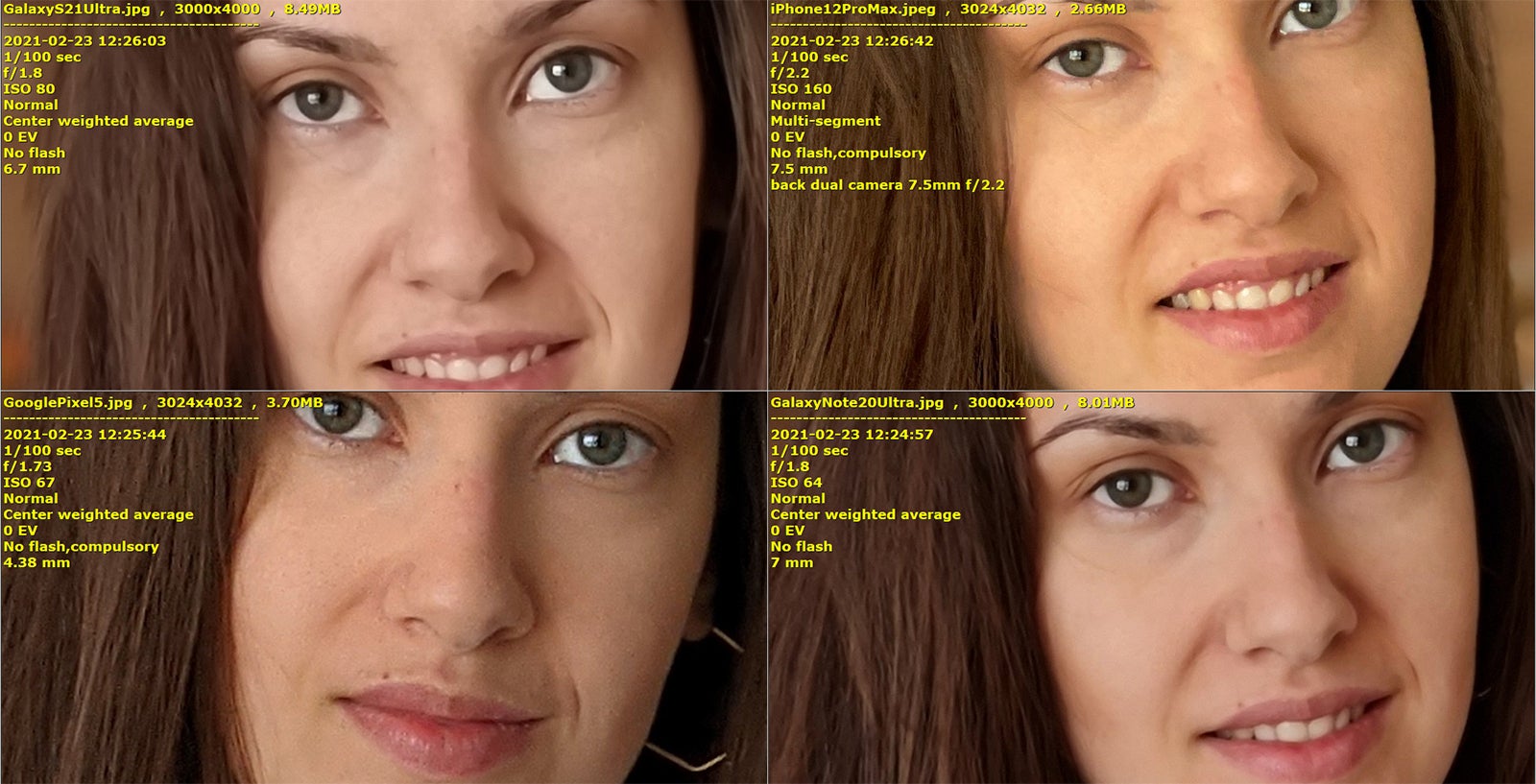
I'm not usually a pixel-peeper, but inspecting the portraits from a closer distance revealed that the iPhone performs consistently better than the rest in terms of image details as it uses its excellent telephoto camera. The same applies to the Galaxy S21 Ultra as well, but it doesn't seem to match that level of sharpness. Meanwhile, the Pixel and the Note 20 Ultra use the main camera lens to snatch portraits, just artificially zoom on the subject.
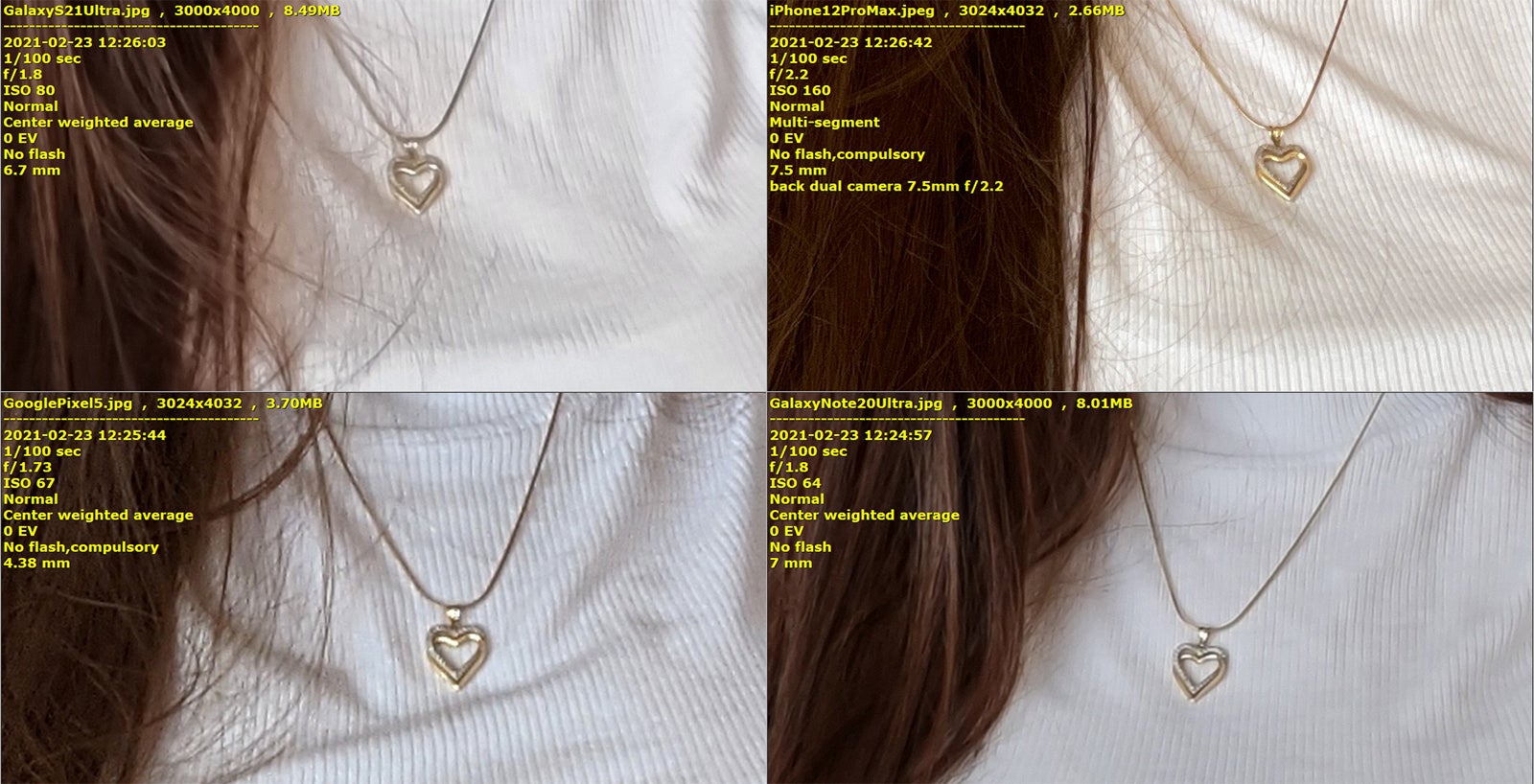
Scene 2
It's once again too hard to determine the 'winner' in this scene without zooming in a bit. Doing that reveals that the Pixel 5 probably shouldn't be on your shortlist if you want to capture valuable family portraits. Meanwhile, the Note 20 Ultra and the S21 Ultra both show a general lack of fine details where it counts. The iPhone does a good job where the other fail to deliver.
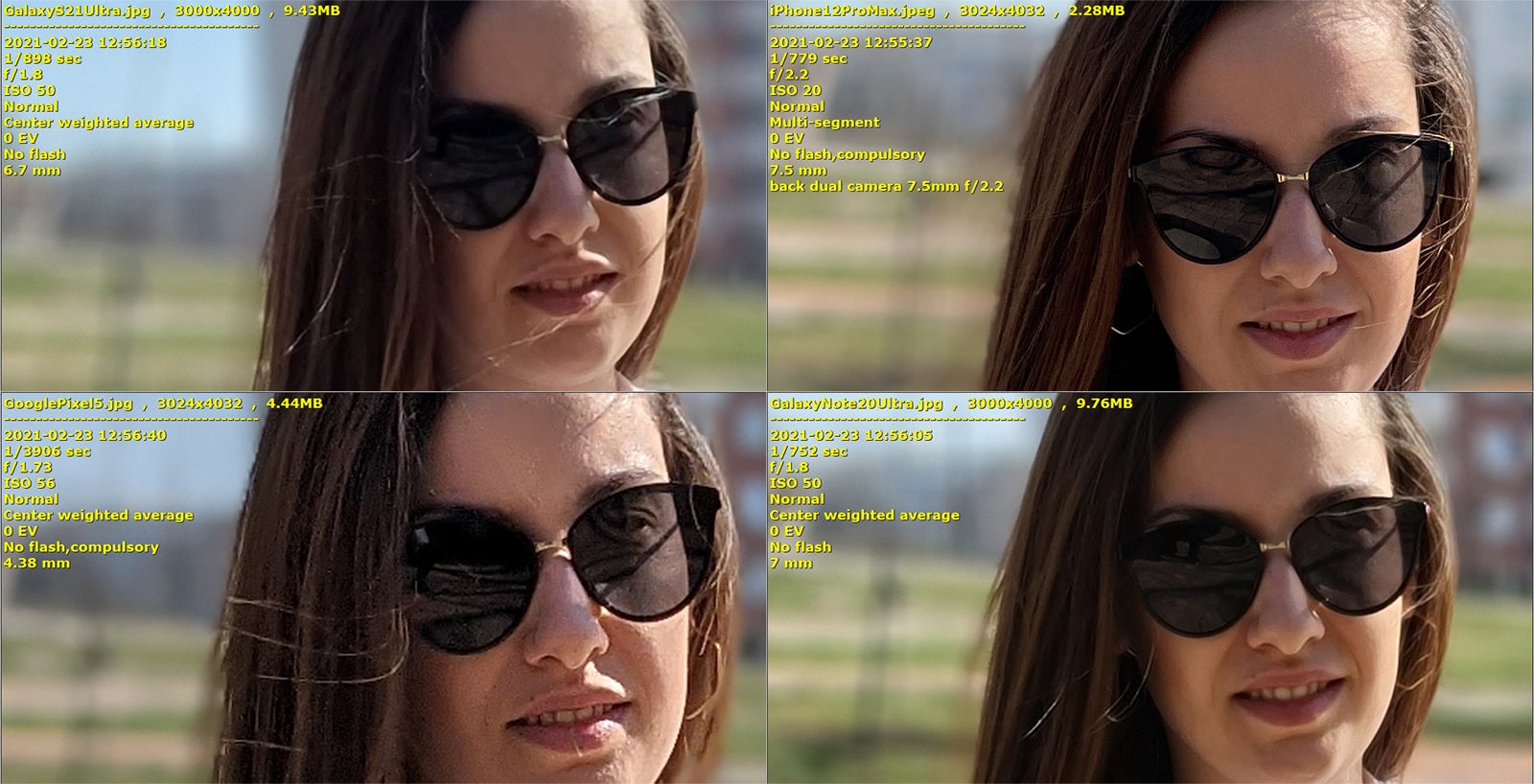
When it comes to subject separation from the background, all phones in this scene show some artifacts. This can be attributed to both the complex background as well the individual strands of hair which are notoriously hard and probably downright impossible to be accurately devoid of blur. The iPhone and the Note 20 Ultra have both delivered the cleanest portraits as far as artifacts go, while the Pixel 5 has decided my 3-month-old son should be lacking the gift of opposing thumbs.
Scene 3
Here is another round of portraits that clearly shows Samsung's tendency to produce overly-smooth selfies that aren't very natural looking. Facial details only look good on the iPhone to me. The Pixel is possibly the worst offender in this scene: the noise and lack of fine details is especially jarring, and that can be easily seen in the 100% crops I've included below.

Another point I wish to tackle is the bokeh inconsistencies throughout some of the portraits. Take a look at the bench and the way its seat is separating the background. The Galaxies and the iPhone correctly deduce that the ground visible beneath the seat ins't in the same dimensional plane as our lovely subject and apply bokeh. Again, the iPhone one looks the most natural to me as it gradually increases in strength. But take a look what the Pixel is doing here - incorrectly assuming that the ground and the subject are on the same plane leads to very abrupt and pretty jarring artifacts, with some spots blurred and others in tack sharp focus.
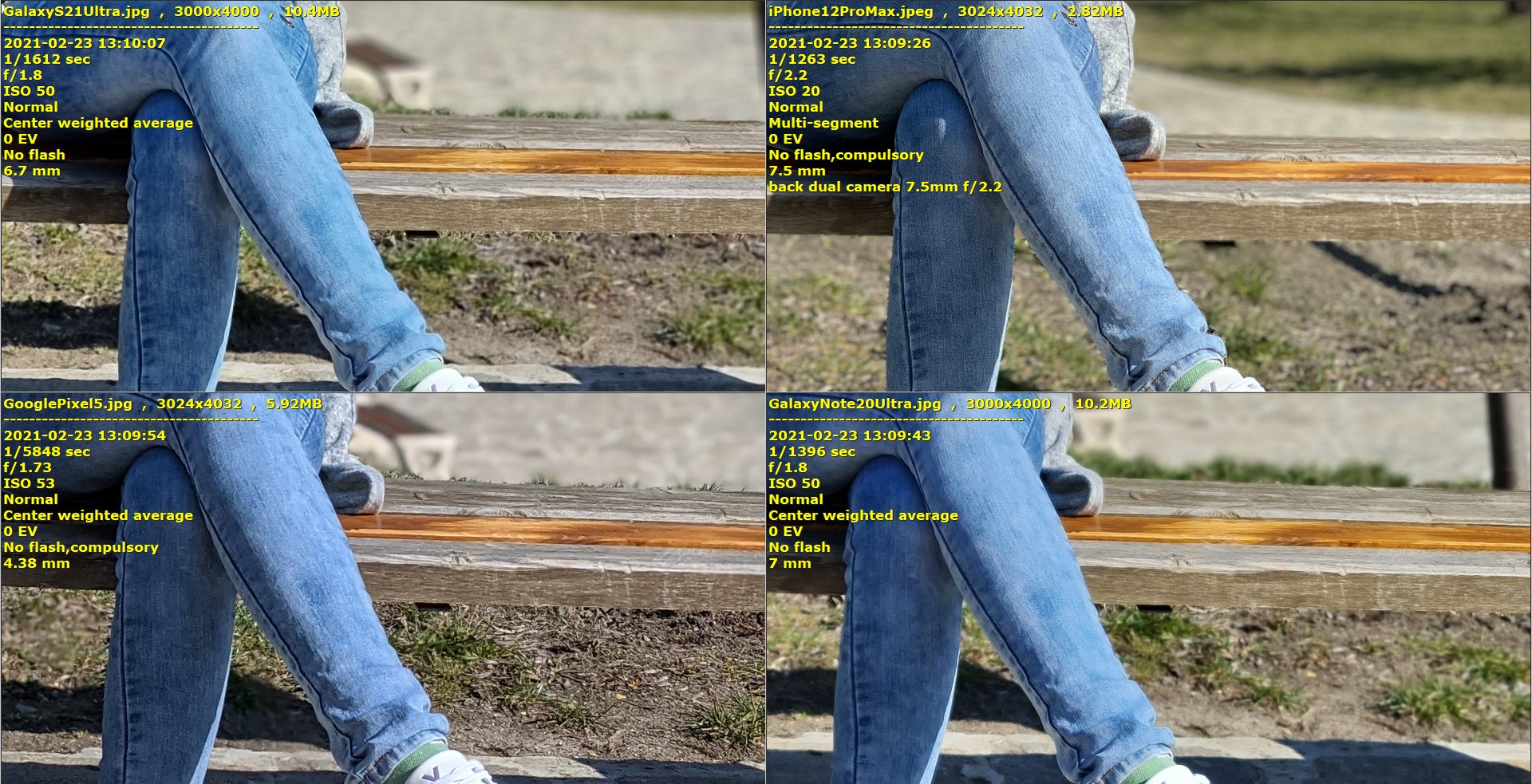
Scene 4
In the shadows, all phones do a pretty good job at lightening up the subject's face in relation to the dim surroundings, which is generally desirable with phone-made portraits. Overall, the iPhone and the Galaxies have all done an excellent job here with great overall looks. The colors are true-to-life and the bokeh is on point. However, zooming in paints a familiar picture - total domination on the iPhone's part, with the two Galaxies left behind with less details.
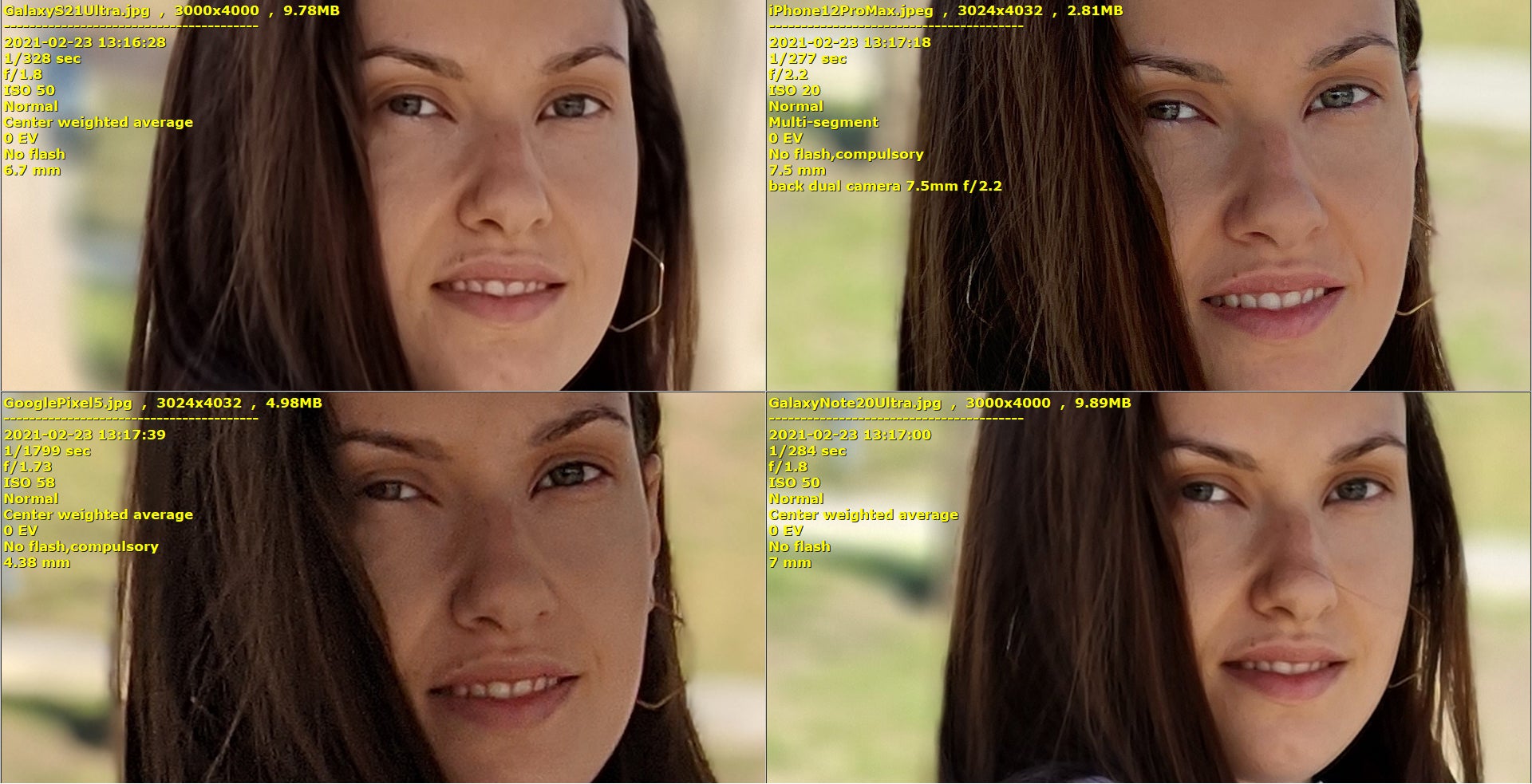
Just look at the insane amount of sharpness of the denim in the iPhone portrait, which can't be matched by the portrait taken with no Android phone, despite having two to three times large file size. Impressive.
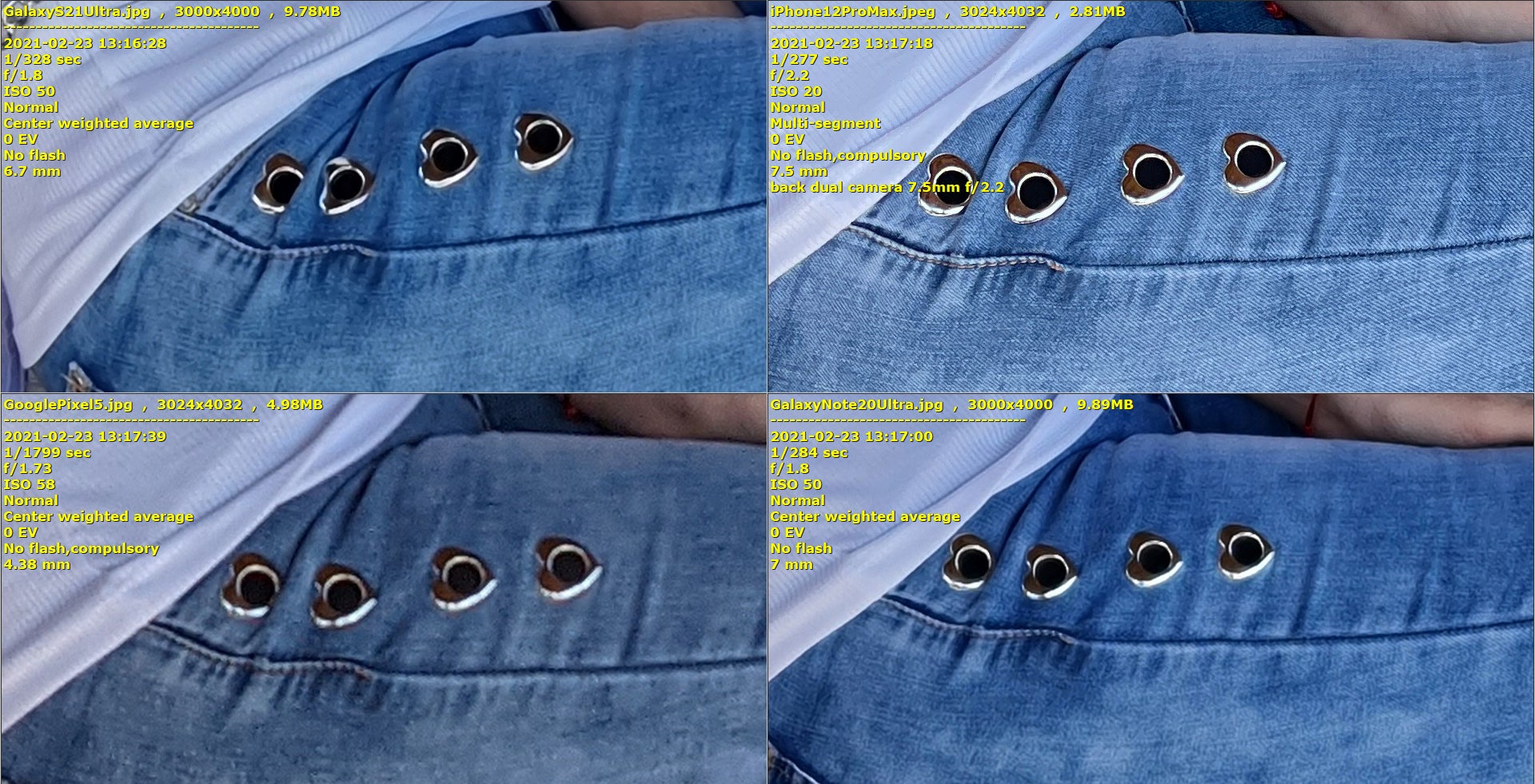
Scene 5
All four phones come at a disadvantage when it comes to portrait selfies since they all have a single front camera that's not pretty good at depth perception. Thus, only software algorithms can be used to determine what should be in sharp focus and what parts of the background should be blurred. For the most part, all phones do a good job at that, though long hair and any additional accessories on your head are pretty likely to get slightly blurred. As evident in the photos above, that's true with all phones so you should definitely keep it in mind when shooting portrait selfies. From a quality standpoint, the color rendition of each phone is what sets them apart: the two Galaxies go for a paler, not as lively look, while the iPhone and the Pixel have a character with more pronounced colors and contrast. There are artifacts here, of course, but that was to be expected.
Conclusion
Despite Android's best efforts, it still seems that the iPhone has its portrait game perfected to the nines. Surely, there are still some issues with Apple's flagship phone, namely in terms of background separation, but overall, it's hard to beat the iPhone in this particular photography genre. Samsung's Galaxy S21 Ultra shows lots of promise with some improvements over the Galaxy Note 20 Ultra, but there's still room for improvement. The Pixel 5, on the other hand, disappoints pretty hard once you start inspecting it under the microscope. Don't get me wrong, the Pixel takes great photos, but it lacks a telephoto and it's especially obvious in terms of portrait photography.
So far, it still seems that it's the iPhone's world, and we're just living in it.
Follow us on Google News






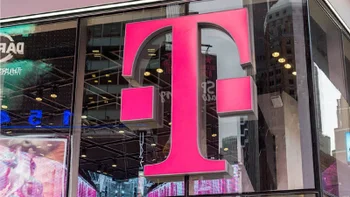






Things that are NOT allowed:
To help keep our community safe and free from spam, we apply temporary limits to newly created accounts: